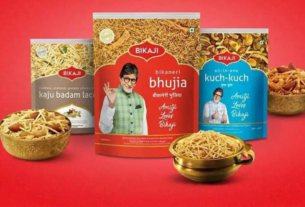Suhani Adilabadkar
Potato prices have gone up by nearly 50% over the past one year. Mixing potato with any vegetable changes its look, taste and the quantity which is essential in the current inflationary scenario. I am talking about food inflation which is above 8% while retail inflation in India is below 5%.
Going back to potatoes, they have become expensive on account of their higher demand as their counterparts are even more pricey. Tomatoes touched Rs 100 mark in June and onion prices are near Rs 50. So, while some eminent members of the monetary policy committee (MPC) are talking about a rate cut, what about the common man’s monthly food budget ? Food price inflation currently stands at 8.69% in May 2024 compared to 2.91% in the same period previous year.
Higher food inflation is mainly due to the unprecedented May-June heat wave conditions on summer crop of vegetables and fruits, lower agricultural production estimates and increase in milk prices undertaken by major cooperatives across India. Food with a weight of 45.9% in consumer price index (CPI) contributed to three-fourths of the headline inflation in May 2024 compared to about 40% a year ago. Food basket consists of cereals, milk, oil, pulses, spices, sugar, fruits, vegetables, non-alcoholic beverages and prepared meals. Cereals had the highest weightage of 9.67% of CPI basket followed by milk and vegetables at 6.6% and 6% respectively in May 2024.
Dr Ashima Goyal and Professor Jayanth R. Varma voted for a 25-basis point cut to the repo rate. According to them, in the absence of a rate cut, growth will be sacrificed leading to slower consumption and lower growth. The other four members, Dr. Shashanka Bhide, Dr. Rajiv Ranjan, Dr. Michael Debabrata Patra and RBI Governor, Shaktikanta Das maintained their cautious stance with respect to food inflation. According to these members, as food inflation persists near 8%, spillover of high food inflation to the rest of the consumption basket needs to be watched vigilantly. Vegetable price inflation is the major contributor to food inflation which has been above 27% over the past six months.
Vegetable inflation in June 2023 stood at 4.63% last year and has increased to 27.3% in June 2024. While a normal monsoon may eventually lead to easing of price pressures in key food items, rainfall deficit is around 18-19% in June and south west monsoons are expected to pick up pace in the month of July. Thus food inflation is expected to come down in Q2 2024-25 and will also be supported by a favourable base effect. The monetary policy committee projects CPI inflation at 4.5% in 2024-25 and in Q2 2024-25, retail inflation is expected to fall to 3.8%.
Voting in favour of an unchanged repo rate of 6.5%, RBI Governor, Shaktikanta Das said, “With persistently high food inflation, it would be in order to continue with the disinflationary policy stance that we have adopted. Any hasty action in a different direction will cause more harm than good. It is important that inflation is durably aligned to the target of 4%.” While south west monsoon has reached northern India, the uncertainty of temporal and spatial distribution of the rainfall witnessed in the previous year remains. Keeping this into consideration, the MPC has taken the right decision.




